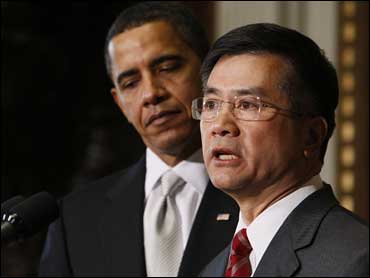Not exactly a profile in courage:
US Representative David G. Reichert’s first mention that he “voted no twice on the stimulus package” earned him a standing ovation that echoed through the Elks Club auditorium. A declaration that “we should be angry” provoked screams of, “We are!”
[…] But in the short term, Reichert acknowledges that the stimulus bill will deliver tangible good news to his constituents. By April, they are to start seeing the bill’s tax cuts reflected in slightly larger paychecks. Within months, there may be job listings for construction projects, perhaps for the high-speed rail corridor – one of 10 nationwide to share in $8 billion in new funding – that runs along Reichert’s district. By the end of the year, local companies in this tech-centric area may be reaching for some of the money to improve the digital infrastructure of the healthcare industry.
“I feel a responsibility at this point to make this still work,” Reichert said.
What absolutely (and absolutely typical) shameless hypocrisy. When the Seattle Times lauds Reichert for his “conscience-driven independence,” I guess they’re really referring to his independence from an actual conscience.
(Oh, and speaking of the Times… why the hell am I reading this article on Reichert in the Boston Globe, instead of the Times, P-I or TNT?)


